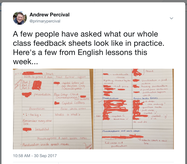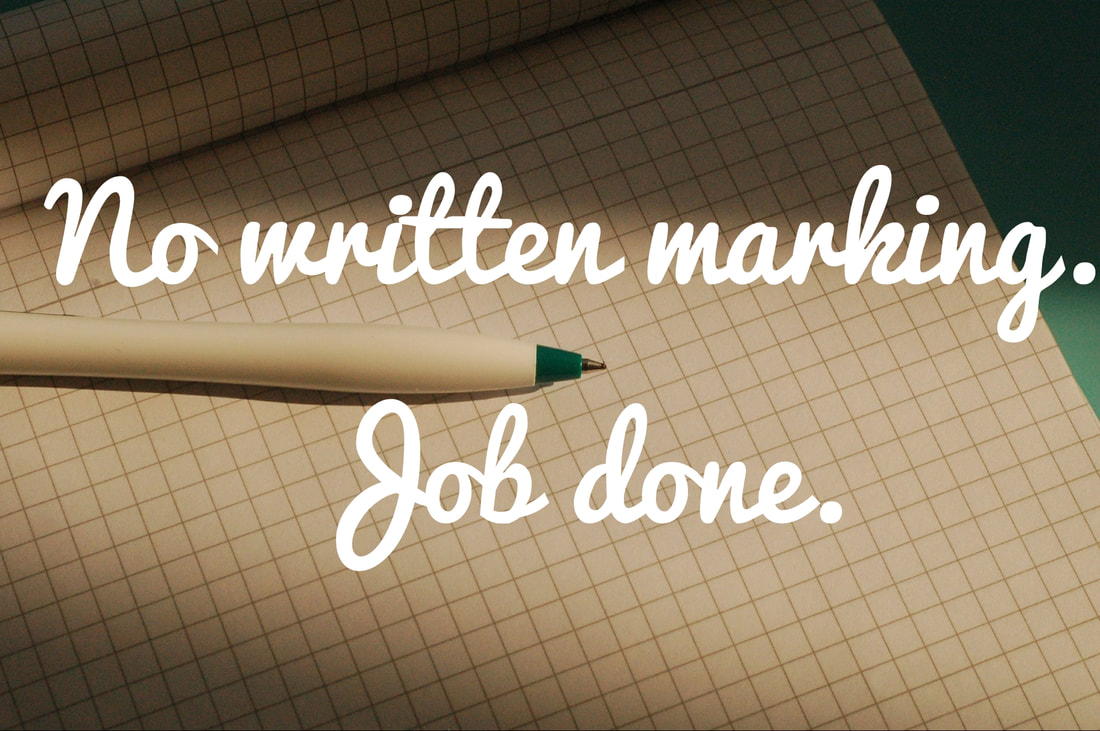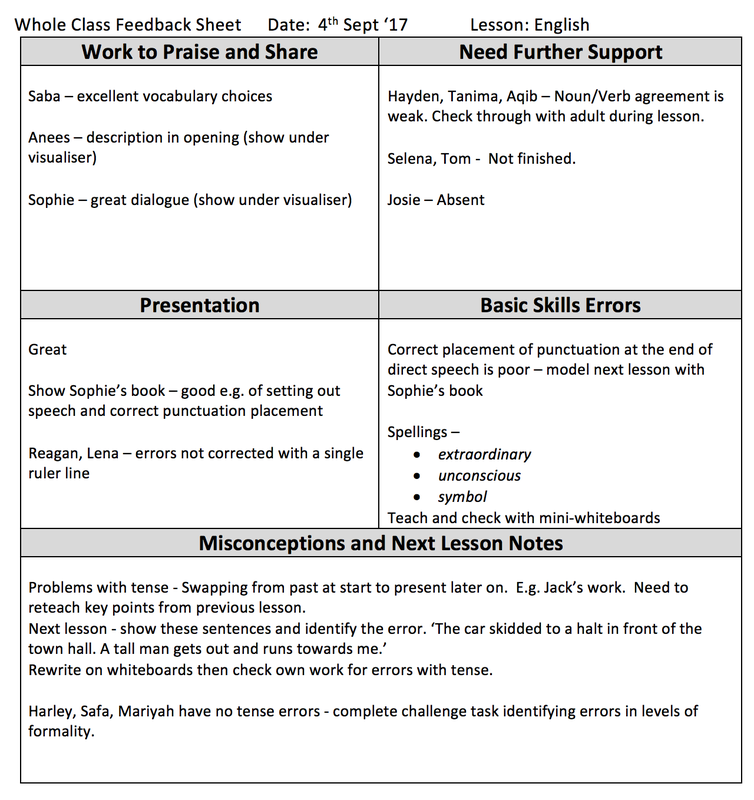|
The Forth bridge is an iconic structure that spans a distance of 2.5km across the Firth of Forth. The bridge is most famous for the colloquial phrase ‘painting the Forth bridge’. This saying comes from the erroneous belief that the bridge was so huge it would need to be continually painted to maintain its upkeep. Such a practice never existed. In 2011 a new coating designed to last 25 years was applied to the Forth bridge. The engineer Colin Hardie of Balfour Beatty Construction was quoted as saying “For the first time in the bridge's history there will be no painters required on the bridge. Job done.”
|
Like painting the Forth bridge, written marking is a seemingly never-ending task. As you complete that pile of books on a Sunday evening you know full well that Monday will bring a fresh new pile of books waiting to be analysed and responded to (possibly in a particular colour of ink and a range of highlighters). Marking is iconic. For many it is an impressive superstructure towering over teachers’ day to day lives. It stands firm and unmoving despite changes in the educational weather.
The phrase ‘painting the Forth bridge’ passed into everyday use despite never being founded on evidence. Can we now begin to say the same for the convention of written marking?
When the EEF toolkit was published, as a school, we fell into the trap that many did of conflating marking with feedback. This lead to an overemphasis on written marking at the expense of other forms of feedback. Written marking became king. We tinkered with the idea of dialogic marking where teachers responded to a pupil’s work, children responded to that response and so on ad infinitum. We were bolstered by the fact that our outcomes across school were rapidly improving so it seemed a reasonable assumption that our marking policy was part of this success.
As I read more widely, I became aware that the marking we asked teachers to undertake was perhaps not having the impact we had convinced ourselves it was having. The words of Michaela Community School’s Deputy Headteacher, Joe Kirby, rang loudly in my ear “Written marking is useful for one child, once only”. What if all the hours spent marking each week could be used for something else? And what if we could actually improve the quality of feedback to pupils without the Sisyphean task of written marking?
Our concerns with our system of marking were three-fold –
1. Was the quality of feedback really as good as it could be? Were children really able to understand how the teacher wanted them to improve from a brief written comment? Were teachers compromising their feedback, truncating complex ideas into short comments with child-friendly language?
2. Were children really taking responsibility for improving their own learning? Or, were they relying on teachers to identify their errors and then simply responding to the teacher’s marking? For example, by filling in missing full stops that had been helpfully located by the conscientious teacher. As Dylan Wiliam states in Hendrick and Macpherson's What Does This Look Like In The Classroom ...
“…too many teachers focus on the purpose of feedback as changing or improving the work, whereas the major purpose of feedback should be to improve the student.”
At the end of the Summer Term we started to have serious conversations about replacing the current marking policy. We knew that Ofsted were not looking for a specific type of marking but were merely checking consistency of approach and that schools were able to achieve outstanding grades in an inspection despite being advocates of ‘no written marking’ policies. The Ofsted Myths document from August 2016 clarified that…
“Ofsted does not expect to see any specific frequency, type or volume of marking and feedback; these are for the school to decide through its assessment policy. Marking and feedback should be consistent with that policy.”
After a lesson, the teacher looks through the pupils’ books for common misconceptions and errors in basic skills. They then sort the books into 3 piles – children who didn’t grasp the concept taught, those who showed good understanding and those who did particularly well. Teachers tick each piece of work to show it has been checked and ‘star’ any parts of work that are worth sharing as good examples. Whilst looking through the books, teachers make notes on the key messages to feedback to pupils at the start of the next lesson using a grid. Here is an example of what one might look like when finished (fleshed out a bit more than would be necessary in practice)...
After this, the teacher plans a whole class feedback session using the notes from the sheet as an aide-memoire. The start of the next lesson begins with the teacher sharing the best work (perhaps using a visualiser), identifying common errors in basic skills (e.g. spellings, number facts) and then addressing common misconceptions that have been identified. This session is flexible in how long it takes but a typical session might be ten minutes or so giving time for children to redress any misconceptions that had arisen and, where useful, check through their work and improve it based on the feedback given (bearing in mind the Dylan Wiliam quote from earlier).
We are now in the throes of the trial and it would be naïve of me to speak authoritatively on the impact this is having on children’s learning. One thing I can be fairly certain of, however, is the immediate and profound impact on teachers’ workload. For a start, our teachers have happily reported to me that they no longer need to take books home to mark. As @Claire_Hill_ states eloquently in her blogpost ‘Research: the gift of time’...
“Teachers are a school’s most expensive resource so our time is, quite literally, too valuable to waste on practices that are inefficient. But, being efficient doesn’t take any of the love or soul out of teaching; it gives us more time, energy and knowledge to deliver really great lessons.”
Is a time coming when headteachers across the land might echo the words of Colin Hardie as he applied that final coat of durable epoxy paint to the Forth bridge?
“For the first time in history there will be no written marking required in books. Job done.”
| Whole Class Feedback Sheet |

After posting this, I had a number of people asking what the whole class feedback forms looked like in practice. I tweeted some images of our teacher markbooks - Click the image of the tweet to have a look.
Useful blogs for further reading
Marking is a hornet - Joe Kirby
Why my school banned marking - Clare Sealy
The new no marking policy in my school and how it works - Clare Sealy
Giving feedback the Michaela way - Jo Facer



 RSS Feed
RSS Feed
